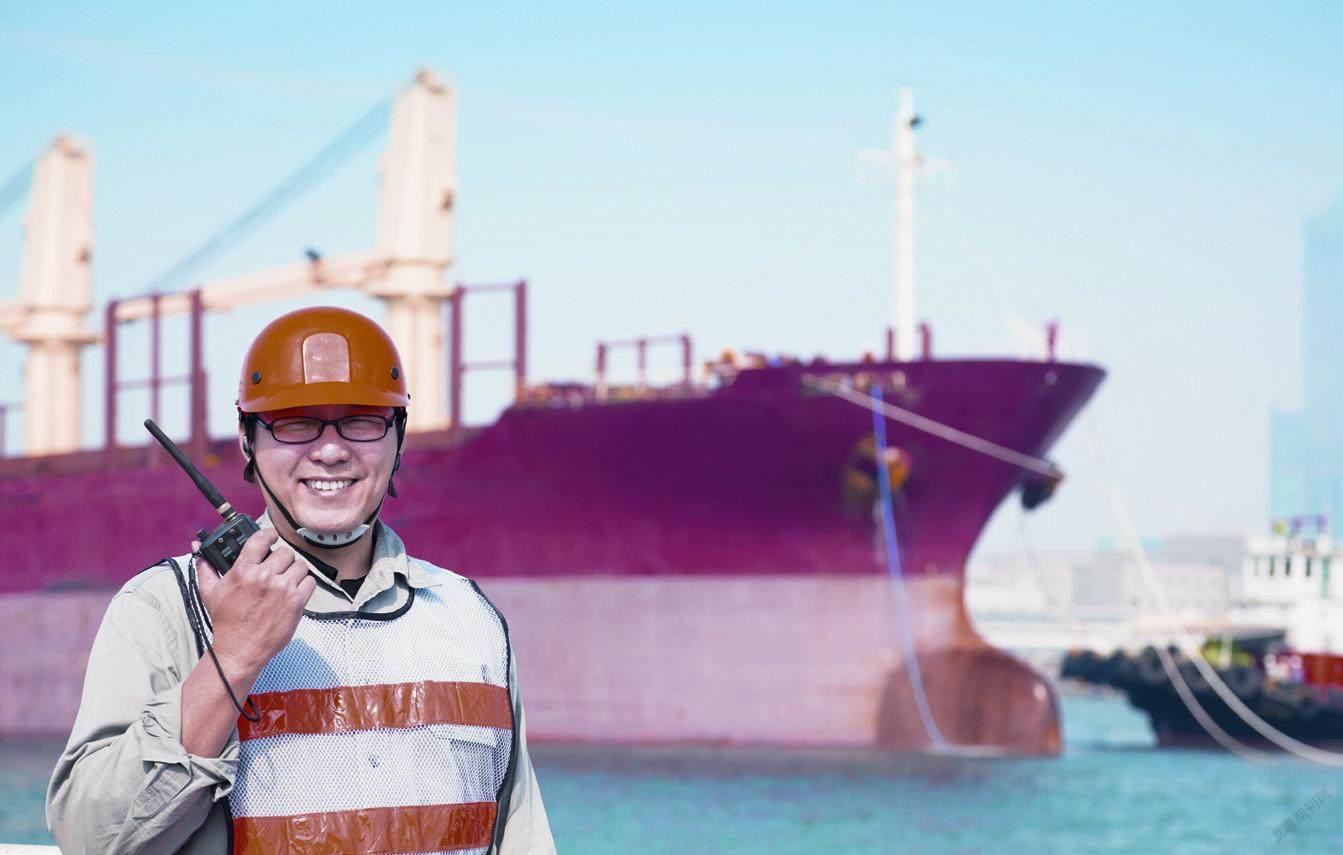China’s Foreign Trade Got Good Performance
By Audrey Guo
At present, due to the severe global COVID-19 pandemic, changes that used to take a century to happen have sped up, while the global environment is becoming more complex and uncertain. In 2021, China’s foreign trade had good performance. According to the data from the General Administration of Customs, in 2021 China’s foreign trade, both imports and exports grew quickly, topping USD 5 trillion and USD 6 trillion in one year, and reaching a new record high. Meanwhile, the quality of China’s foreign trade was improving steadily, making a good start for the foreign trade industry during the 14th Five-Year Plan period.
Improvements in both quantity and quality
In 2021, China’s import and export volume reached USD 6.05 trillion, meaning it had been eight years since it first topped USD 4 trillion in 2013. In addition, foreign trade volume exceeded USD 5 trillion and USD 6 trillion in one year, reaching a historical high, marking an increase of USD 1.4 trillion. In 2021, China’s import and export value of commodity trade totaled RMB 39.1 trillion, an increase of 21.4% yearon-year.
Spokesman for the General Administration of Customs, Li Kuiwen, said that leading global economic growth and effective pandemic prevention and control measures were some of the factors strongly supporting China’s foreign trade. In 2021, Chinese economy continued to recover, the construction of new development patterns moved on, high-quality development made new progresses, and major economic indi- cators kept growing quickly. China’s tough economy and long-term positive fundamentals, as well as firm domestic production and consumption demand all boosted foreign trade’s stable growth.
According to Li Kuiwen, the following factors were the main factors supporting China’s foreign trade to grow.
First, China had the world’s highest economic growth rate and effective pandenmic prevention and control measures. In 2021, Chinese economy continued to recover, the construction of new development patterns moved on, high-quality development made new progresses, and major economic indicators kept growing quickly. China’s tough economy and long-term positive fundamentals, as well as firm domestic production and consumption demand all boosted foreign trade’s stable growth. According to customs’ statistics, China’s imports and exports of intermediate goods grew by 24.9% and 28.6% respectively in 2021, and imports of consumer goods grew by 9.9%.

Second, the global economy continued the recovery trend. The global economy as a whole tend to recover in 2021, and both the World Bank and the International Monetary Fund estimated a world economic growth of more than 5%, while the World Trade Organization forecasted the global trade in goods would grow by 10.8%. In 2021, exports from China to the European Union and Africa grew more than 20%, and exports to Latin America grew by more than 40%. From the perspective of products, following a high increase in 2020, the combined exports of Chinese laptops, tablet PCs, household appliances and other products related to stayat-home economy grew by another 13.2% in 2021, exports of medical materials and pharmaceuticals grew by 101.2%, strongly supporting the global fight against the COVID-19 pandemic.
Thirdly, measures and policies to stabilize growth had effects. Since 2021, China has introduced a series of policies and measures to stabilize the economic mainstay, the market as well as the foreign trade supply chain and industry chain, such as increasing financing support for small-and medium-sized enterprises and manufacturing enterprises, deepening the reform to streamline administration and delegate power, improve regulation, and upgrade services, continuously optimizing the business environment, accelerating the development of new business models and new modes of foreign trade, further deepen the reform for cross-border trade facilitation, and promote the reform and innovations in pilot free trade zones to facilitate trade and investment. As such policies are carried out, foreign trade enterprises will be stimulated, and then actively secure stable growth of foreign trade.
According to Bai Ming, Deputy Director of the international market institute at the Chinese Academy of International Trade and Economic Cooperation of Ministry of Commerce, China’s foreign trade industry in 2021 had five features. First, it was tough, and didn’t pause development because of a series of challenges such as the pandemic. Second, China’s foreign trade industry was capable, since China is now actively boosting the foreign trade transformation and upgrade, and has demonstrated toughness, influence and competitiveness in the international industrial chain and supply chain. Third, China’s foreign trade industry was supported, as national policies to stabilize foreign trade and of governmental support at all levels helped foreign trade enterprises overcome many challenges. Fourth, China’s foreign trade industry was responsible, meaning it filled the gap created as a result of disrupted industrial chain and supply chain issues in some countries, helping maintain the stability of the global trade market. Fifth, China’s foreign trade industry was prepared, as it seized the opportunities in recovering global economy and overseas demand.
Imports and exports between China and countries along the Belt and Road increased by 23.6%
2021 marked the 8th anniversary of the Belt and Road Initiative. In last 8 years, trade relations between China and countries along the Belt and Road got increasingly closer. According to customs’ statistics, in 2021, China’s total foreign trade with countries along the Belt and Road reached RMB 11.6 trillion, marking an increase of 23.6%, 2.2 percentage points higher than the overall growth rate of China’s foreign trade of the same period. In 2021, the export volume from China to countries along the Belt and Road totaled RMB 6.59 trillion, up by 21.5% from a year ago, and imports into China totaled RMB 5.01 trillion, up by 26.4%.
First, the trade volume grew steadily. Between 2013 and 2021, China’s total import and export value with countries along the Belt and Road grew from RMB 6.46 trillion to 11.6 trillion, marking an average annual growth of 7.5%, accounting for 29.7% of China’s total foreign trade value, up from 25%.
Second, China and countries along the Belt and Road had tighter cooperative relations on industrial chain and the supply chain. The share of intermediate products in China’s exports to countries along the Belt and Road increased from 49.8% in 2013 to 56.2% in 2021, with exports of auto parts, textiles, Li-ion batteries up by 26.7%, 14.1% and 50.4% respectively.
Third, cooperation in energy, agriculture, minerals and other areas improved. In 2021, the import value of crude oil from countries along the Belt and Road totaled RMB 1.18 trillion, marking an increase of 44%; agricultural products of RMB 326.55 billion, up by 26.1%; metal ore of RMB 212.77 billion, up by 24.9%; natural gas of RMB 185.45 billion, up by 38.9%.
Fourth, private enterprises were active. In 2021, Chinese private enterprises had a total import and export value with countries along the Belt and Road of RMB 6.21 trillion, increased by 25.6%, accounting for 53.5% of the total foreign trade between China and countries along the Belt and Road, up by 0.8% from a year ago.

As to emerging trade modes, China’s cross-border e-commerce market is rapidly expanding, and had a total import and export value of RMB 1.98 trillion in 2021, increase by 15%, while exports through market procurement grew by 32.1%.
In 2021, in the face of the global pandemic, cross-border e-businesses in China took the advantages of online marketing and transactions, contactless delivery and so on, and actively cultivated new advantages to participate in international cooperation and competition, helping stimulating import and export volume continue to grow rapidly. Li Xingqian said, in order to help cross-border e-commerce export enterprises better develop international market, various customs in China carried out cross-border e-commerce B2B export supervision pilot in the second half of 2021, with perfecting supporting policies. Meanwhile, Qingdao (China-Shanghai Cooperation Organization Demonstration Zone for Local Economic and Trade Cooperation in Qingdao) – Minsk, Yiwu-Xinjiang-Europe, Suzhou-Xinjiang Europe, Hefei to Hamburg and Wilhelmshaven, Germany, and other cross-border e-commerce special trains began routine operation, realizing the integration of the China-European freight train with cross-border e-commerce.
As an important overseas node of cross-border e-commerce, overseas warehouses have become a new type of infrastructure for foreign trade. Besides, rising shipping costs, tight supply of warehouses and other factors have made more and more enterprises realize the importance of overseas warehouses, and many provinces and cities have introduced policies to encourage and support the construction of overseas warehouses. Li Xingqian said, now the number of overseas warehouses has exceeded 2,000, with a total area of more than 16 million square meters. The model of “export credit insurance + overseas warehouse” is getting popular.
How to deal with triple challenges ahead
As proposed at the Central Economic Work Conference held not long ago, the economic development in China will face three challenges including contracting demand, unstable supply, and weaker expectations, reflected in declining PMI index for new export orders in the second and third quarter, deviating from the export statistics.
Li Kuiwen said that as global pandemic continues, and the external environment becomes more complex and uncertain, the relative advantages of China in leading economic recovery and effects of this may be weakened, resulting in increasing uncertainty, instability and imbalance in China’s foreign trade industry in 2022.
However, Zhou Maohua said, China’s foreign trade will certainly face pressure in 2022, but there are still opportunities. China is still implementing the most effective pandemic prevention and control measures and the supply system in China is sound and sufficiently flexible as well as elastic. Continuously optimizing the domestic trade structure will improve market competitiveness gradually. Domestic and overseas supporting foreign trade policies are still working. Meanwhile, the global pandemic is expected to have a marginal weakening impact on the economy and supply chain, and together with favorable policies, demand will keep on recovering. Reviving global industry chain is also a major benefit to the industrial manufacturing sectors in China.
Recently, the General Office of the State Council issued the Opinions on Ensuring Cross-Cyclical Adjustments and Further Stabilize Foreign Trade, which listed 15 polices and measures in four aspects, including strengthening fiscal and financial policy support, encouraging the development of new foreign trade models, easing the pressure on international logistics and other foreign trade supply chain, supporting key enterprises in key industries and so on, in order to stabilize foreign trade.
Bai Ming believed there would be prominent favorable factors for foreign trade in 2022. First, the competitiveness of China’s exports will further improve and the dependence on products “Made in China”will continue. Second, favorable policies will come into play, including further opening up, the implementation of the RCEP, and a series of policy and measures to stabilize foreign trade. Third, cross-border e-commerce, digital trade and other new trade models will become a new stimulus for China’s foreign trade industry. Fourth, the Belt and Road construction will bring new opportunities for Chinese foreign trade enterprises.
- China’s foreign Trade的其它文章
- Looking Back At 2021:The Chinese Economy Shows Strong Resilience and Vitality
- CCPIT Work Meeting 2021 Is Held Virtually in Beijing
- Joint Effort to Resolve Disputes in Intellectual Property Rights
- Six Industry Opportunities As A Result of Population Change
- Demands for Coal-fired Power Will Reach New High
- IDC’s Top 10 Predictions on China’s ICT Market In 2022

